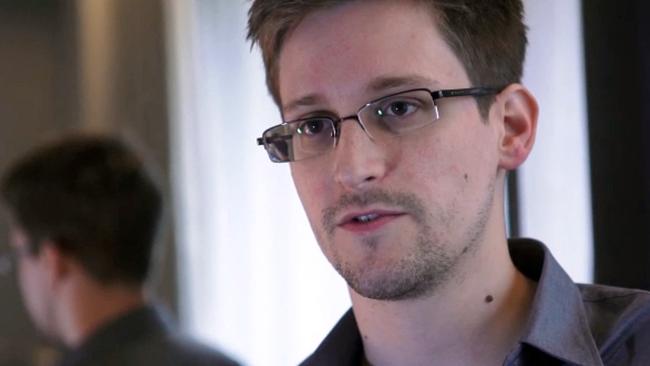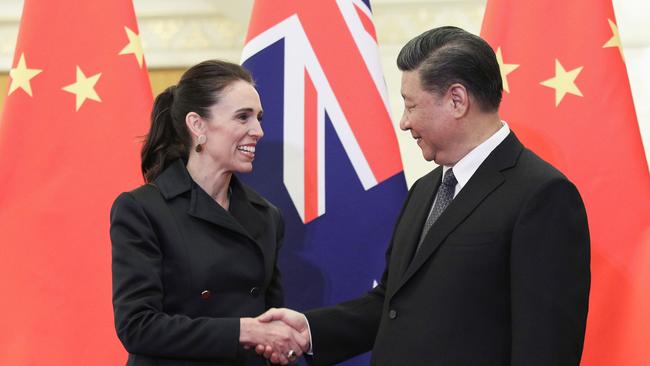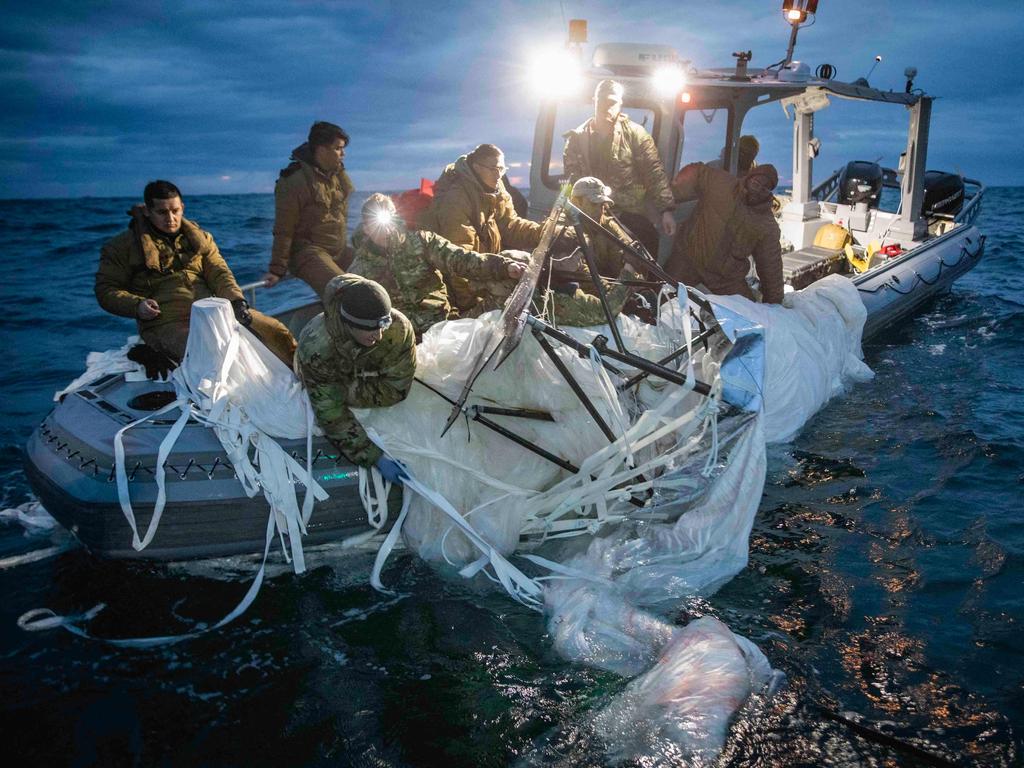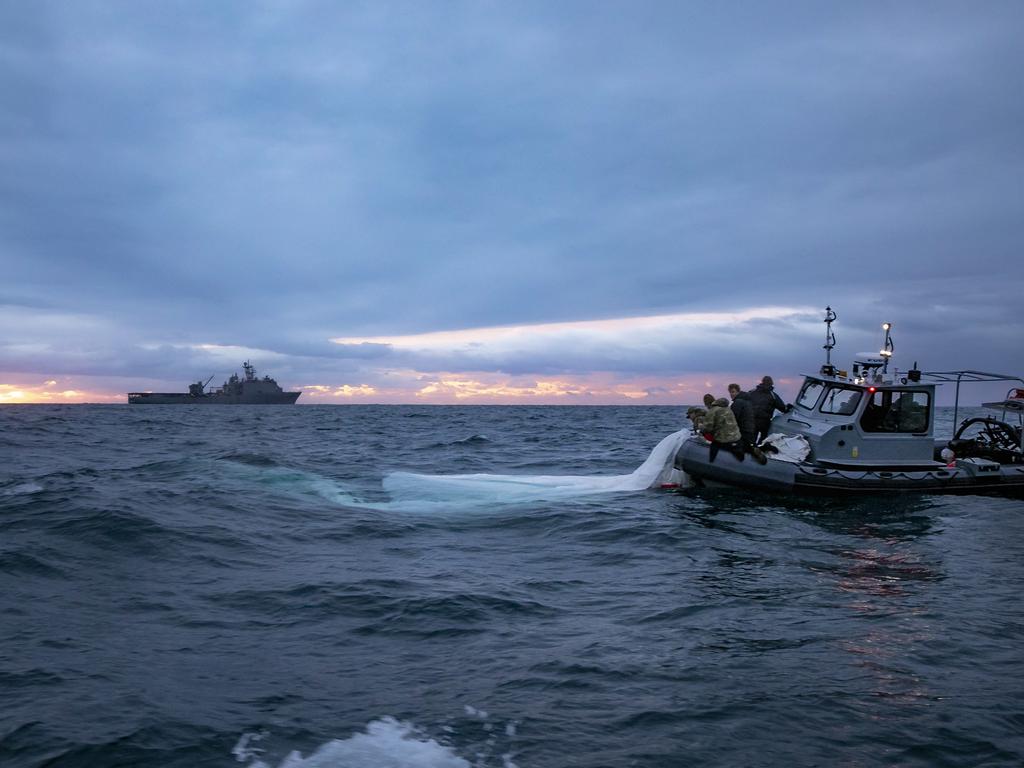Chinese spy balloon symbolises challenge for Five Eyes allies to maintain the edge
The decades-old Five Eyes network helped defeat the Soviet Union and thwarted Islamist attacks during the war on terror. But it may have met its match in Beijing.

The premier intelligence-gathering network among liberal democracies, the decades-old Five Eyes network, which emerged publicly in 2010, helped defeat the Soviet Union and thwarted fundamentalist Islamist attacks during the war on terror, but it may have met its match in a better resourced and ruthless Beijing.

Robert Spalding, a retired US Air Force brigadier general who was stationed in Beijing in 2017, says he “would absolutely agree the Chinese have become more capable”, pointing to their relentless penetration of open-source data – the vast troves of information we store on our mobile phones and digital devices.
“The Chinese can track people in the Pentagon, in the White House and on Capitol Hill; they can create a very fulsome picture of just about anything and anybody they want,” says Spalding, now a senior fellow at the Washington-based Hudson Institute.
“The Chinese saw the model that we built and then adapted it to an authoritarian world,” he explains, referring to the Silicon Valley-led information and digital architecture that allows digital data to be sold, which is the lifeblood of business models of the tech giants.
“The Chinese understood the dangers of an open internet very early on and began the process of creating an infrastructure that supports their ability to obfuscate the things that they need to … it’s almost accepted there’s nothing we can do about it.”
To Spalding, and the rest of the intelligence community, it wouldn’t have been a surprise that at least 913 Chinese spy cameras and surveillance devices have been installed across 250 sites in Australian government departments, as reported by The Australian this week.
As US authorities began poring over the debris of the ill-fated Chinese balloon – a fascinating marriage of 18th-century spy innovation with 21st-century technology – US Defence officials said it was part of a larger fleet that had been crisscrossing nations for years, including Japan, India, Vietnam, Taiwan and The Philippines.

China has spy satellites flying over the US every day, taking pictures, collecting radio signals and other data, the Centre for Strategic and International Studies recently pointed out, noting Beijing had launched another four last year.
“The Chinese have mounted against Australia and the United States the largest intelligence operation in the history of the human race,” former deputy director of the US Defence Intelligence Agency Douglas Wise tells Inquirer.
“China’s intelligence machine can wield unlimited cyber power, they have invested heavily in it and it is a critical dimension of their incredibly large, global intelligence program.” Such methods allowed the Chinese to make off with ASIO’s blueprint for a new building in 2013 and, two years later in 2015, 22 million American government employee records held by the US Office of Personnel Management. A decade of practice later, imagine what they would be capable of now, or in an actual hot war.
Last year, the US intelligence community budget was $US89.9bn, up from $US84.1bn in 2021 according to the Office of the Director of National Intelligence.
Based on their 2021 relative budgets, and using today’s exchange rates, the US budget was 18 times that of Britain, 56 times that of Australia, 76 times Canada’s and 525 times that of New Zealand.

The US does the heavy lifting, but Australia spends more than Canada or New Zealand, based on population and economic weight.
To some extent, China has been learning from the Five Eyes masters, which still command significant resources.
Edward Snowden, who stole about 1.5 million top secret US government documents in 2013, enough to pile up 5km high according to British intelligence agencies, revealed Five Eyes had been spying on China for years.
Indeed, Australia and Britain detected Beijing’s first nuclear weapons test in 1964 from Tai Mo Shan, the highest peak in then British Hong Kong whose facility later was moved to Western Australia in 1997, according to Richard Kerbaj in his fascinating new book, The Secret History of the Five Eyes.
“XKeyscore, one of the systems shared between the (US) National Security Agency and other Five Eyes agencies, was exposed by Snowden as operating like a vast database containing the internet browsing histories of millions of people, along with details of their emails and online communications,” Kerbaj writes.
“Analysts could run specific searches for the IP addresses, names, telephone numbers of their targets, along with ‘real time’ interception of their internet searches and websites visited.”
Modern information warfare no longer hinges on the skills of individual spies and double agents, entrenched in popular imagination by decades of James Bond movies. Information technology, and the capacity to wield it, has made 007 almost redundant.
“I think in terms of just the ability to pierce the veil of the Chinese Communist Party, it’s almost impossible,” says Spalding, noting the CCP maintains “billions of cameras” throughout mainland China.
“I literally basically accept the fact that I was being videotaped and listened to 24/7 there; I couldn’t even have a secure conversation with my own wife outside a secure facility at the embassy SCIF.”
In 2009, a Jordanian doctor who had been recruited by the CIA to infiltrate al-Qaeda blew himself up, killing seven CIA officers. The Chinese have become almost as ruthless, killing or incarcerating 20 CIA sources between 2010 and 2012 alone, according to Kerbaj.
“Lost informants are typically bad for recruitment campaigns, and those who are turned can compromise the intelligence analysis and policy decisions of the countries they target by feeding misinformation to their handlers,” Kerbaj writes.
Periodic fears that the Five Eyes partnership could fracture haven’t eventuated, and appear less likely in view of the emerging competition from Beijing.
The Trump administration’s insistence that Britain ban Chinese telecommunication giant Huawei, following Australia’s decision in 2018 and the US in 2020, seriously frayed relations between the two biggest contributors to the Five Eyes partnership.
More recently, questions have emerged about New Zealand’s suitability, given the Labour government’s ever closer relations with Beijing.

Jacinda Ardern’s government refrained from joining Australia and the US in condemning China’s treatment of the Uighurs, its opacity surrounding the origins of Covid-19, its designs on Taiwan and human rights abuses in Hong Kong. But Wise says he is “confident” Wellington’s harmonious relations with Beijing won’t affect its position in the intelligence alliance,
“We without question understood the New Zealand security services are deeply loyal, committed to the safety and security of the NZ people and to the citizens of the other Five Eyes countries. I don’t see any of the normal routine common political drama affecting New Zealand status in the Five Eyes. I just don’t.”
Wellington avoided being booted out of the intelligence alliance in the mid-1980s when then Labour prime minister David Lange refused to let the USS Buchanan into New Zealand’s harbours.
ANZUS as it pertained to New Zealand and joint military exercises were suspended, a furious Reagan administration told Lange, but Wellington stayed in the club.
New Zealand’s Government Communications Security Bureau, its equivalent to ASIO, provides the US with “access and perspectives we can’t possibly have”, Wise says.
Indeed, Snowden’s dump of classified documents revealed the GCSB had been spying on Tonga, Fiji and Papua New Guinea and passing information on to the US for years.
China’s “no limits” partnership with Russia, which emerged just before Moscow invaded Ukraine last year, has fuelled fears the Chinese intelligence machine would become even more lethal.
“The Russians and the Chinese are dangerous because they don’t have accountability and they don’t operate under rule of law or a moral frame of reference,” Wise says.
Beijing’s secret pact with Solomon Islands, signed last year, creates the ominous spectre of a Chinese military base and intelligence-gathering hub located much closer to Australia.
A memo circulated among top CCP officials in 2013, called the Communique on the Current State of the Ideological Sphere, spelled out China’s permanent antipathy to Western values – a free media, universal human rights – regardless of the formal state of geopolitical relations among nations.
China, well on its way to becoming the Saudi Arabia of data, sees itself as already being at war with the US, Wise contends.
Liberal democracies copied China’s public health measures during the Covid-19 pandemic, tearing up their old pandemic plans that warned against contact tracing, giving them a small taste of CCP-style power.
The challenge for Australia and other liberal democracies will be how to maintain their respect for privacy, the rule of law and individual rights, while facing off against the CCP that cares little for them. After all, without those values, there’s less reason to bother resisting.
“What China has in scale and Russia has in ruthlessness, the Five Eyes have in capabilities, tradecraft and in the extraordinary professionalism of their workforce. Advantage to the good guys,” Wise concludes.
Here’s hoping he’s right.








The Chinese spy balloon shot down off South Carolina last week was a powerful symbol of a vast Chinese Communist Party spying machine that is challenging, and perhaps eclipsing, the intelligence-gathering capabilities of the US and its Five Eyes partners, Australia, Britain, Canada and New Zealand.